SEESTAR S50 SMARTSCOPE
SEESTAR S50 SMARTSCOPE from ZWO
Having gone through the experience of imaging the night sky using lens and telescopes with film, digital SLR camera, then electronic sensors, namely the GSTAR-EX video camera, getting a smartscope has really changed the game.
When a friend first told me
about the Seestar S50 and I looked at their web pages, I thought naaaa,
that's too good to be true.
Yep, I've had to eat my words.
This thing is bloody amazing... and its just a 2 inch diameter
telescope.
That's smaller than the telescope I started with over 40 years ago!
As long as you are not trying to win an astro-imaging competition, this little scope will reveal just about anything you want... and do all the hard work for you. So, its ideal for beginners to dive in the deep end and produce some amazing images of objects in the night sky.
The Seestar S50 is made by the
ZWO company and retails less than $1000 (currently around $800Aus).
I have no affiliation with this company, I just think its an amazing
product worth talking about.

So, apart from your smart
phone, everything you need is in the small tough foam carry case.
There is a 50mm diameter f/5 3 element (apochromatic) refractor, a
sturdy tripod, Solar filter, and USB to C cable.
It has built-in auto focus, a dew heater and dual-band OIII/Ha filter
for light polluted suburban skies. It is all controlled via WiFi or
Bluetooth from the Seestar app you install on your smart phone.
The software is periodically being upgraded in response to users wishes.
The camera uses a Sony IMX462
chip with a resolution of 1920 x 1080 pixels, perfectly suited to a
smart phone screen.
This gives an actual Field of View (FOV) of 1 degree 17 minutes High x
43 minutes Wide.
All my images on this webpage have been reduced in size to 1/3 or 1/4 of
original size.
The S50 was originally designed to work in Alt-Az mode but later software updates allow Equatorial mode as well.
It has 3 main imaging modes: Scenery, Solar System and Deep Sky.



In Alt-Az mode, after leveling and compass calibration, it can find objects from the built-in sky map.
It takes great images of the Sun and Moon but is not suited for detailed planetary imaging because of the relatively short focal length of only 250mm but it will show Jupiter and its main moons, you can just make out the belts.

Not bad on comets though.
Single frame and a mosaic done in GIMP.



14 September 2025 Comet/2025 R2
SWAN.

On the night of 20 September
2025 a brief encounter as two comets passed, C/2025 R2 SWAN and C/2025
K1 ATLAS.
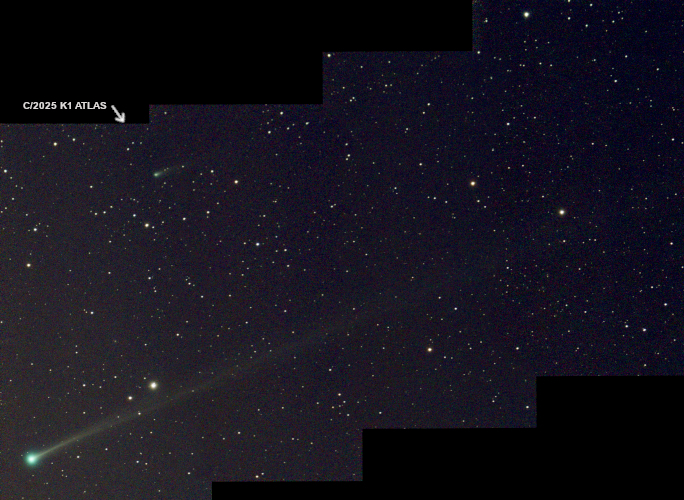
In Deep Sky mode, once centered
on an object, the S50 starts taking 10 second exposures. It then stacks
them, compensating for tracking drift and field rotation. You can build
up the image for as long as you want. Bad frames are rejected
automatically.
The images are pretty impressive straight off the telescope but I have
tweaked the following examples using GIMP image software.



A selection of Globular
Clusters taken in Alt-Az mode

A limitation of tracking in
Alt-Az mode is field rotation, this gets worse high up in the sky and
especially crossing the meridian.
Generally, Alt-Az imaging is recommended when targets are below 65
degrees elevation.
To get better signal to noise, I tried manual stacking of some images
taken over a few nights.

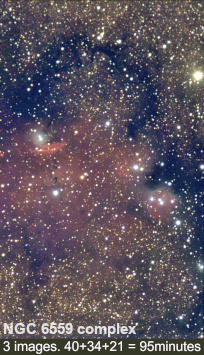
I manually created a few mosaic
images using the GIMP.
Later versions of the app now have mosaic routines built in allowing you
to image wider fields of view up to 2 times bigger.


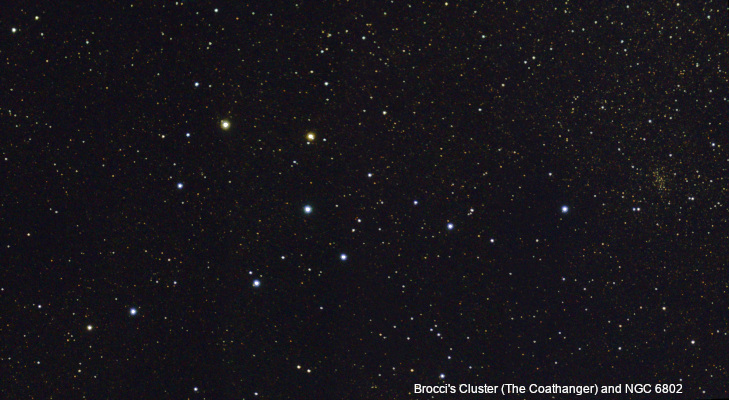


The latest version of the app
allows for Equatorial mode which overcomes the field rotation and high
target issues.
You can now track objects high up and through the meridian which is the
best place to image deep sky objects.
I removed my Skywatcher Star Adventurer EQ head and put the S50 on the
wedge which works really well.
There is even help in the app to fine tune the polar alignment of the
mount.
I also mounted a laser pointer to the S50 to more easily point to
objects to sync the star map to.
Once synced, it points accurately all over the sky for the rest of the
session.
As an experiment, I also made an adjustable EQ wedge from wood that
utilises the S50 tripod, this also works very well.

Some images taken using both EQ
mounts.










Pushing the distance out a
bit... faintest stars in 30 min exp... 19th mag (Sloane SDSS DR12
Navigate Tool).
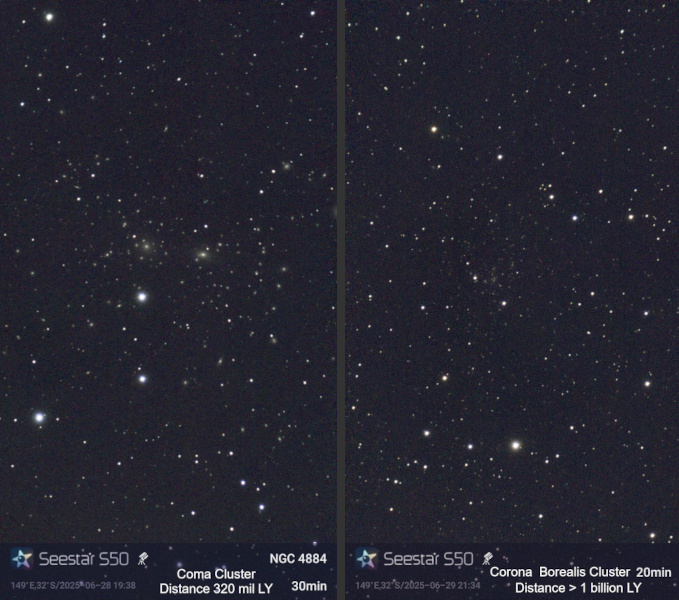
An obscure little dark patch in
the centre called the "Thumbprint" and some background Galactic Cirrus
nebula
(Integrated Flux Nebula - IFN) in Chamaeleon.

More IFN in Apus near galaxies IC 4633, 4635 (top-centre). Mosaic of 8
overlapping fields, 3 degrees W x 1 degree 22 mins H.

Some S50 mosaics:
Eta Carina. 2x standard FOV. 2d 33m H x 1d 26m W.

NGC 6726-27-23 Corona
Australis. 1.3x standard FOV. 1d 40m H x 53m W.

M 20-21 Sagittarius 1.3x
standard FOV. M 8 and NGC 6559. 1.6x standard FOV.


1.4x standard FOV. 1d 45m H x 1d 06m W
Markarian's Chain in Virgo.

NGC 253 and NGC 288 in Sculptor.
1.5x standard FOV. 2d 12m H x 1d 14m W.

Messier 33 in Triangulum. 1.4x
standard FOV.

Lynds Dark Nebula 1795 in
Scorpius. 1.4x standard FOV.

NGC 104 and Kron 3 at top and
NGC 121 at bottom. 1.2x standard FOV.

Barnard 68, 69, 70, 72, 74, 76
in Ophiuchus. Messier 16 in Serpens. 1.2x standard FOV. 1d 36 H x 54m W


Manual mosaic of IC 4628, Trumpler 24, NGC 6231 and Zeta Scorpii. 1d 36m
H x 2d 41m W.

IC 2944-2948, Lambda Centauri, IC 2872-Gum 39, RCW 61-Gum 41 in
Centaurus.
Mix of two S50 mosaics 2x FOV merged side by side. 1d 58m H x 2d 12m W.

NGC 6193, NGC 6188 in Ara, NGC
6164-65 in Norma.
Mix of two S50 mosaics 1.4x FOV merged side by side. 1d39m H x 1d 37m W.

After a long run of bad weather here, I finally got a clear night on 24th August 2025. I had taken a few shots trying to get the interstellar comet 3I/ATLAS with the Seestar but must have had the wrong field. I downloaded a new ephemeris from JPL Horizons App. and picked it up straight away. This little sequence has a 5 mins exposure, 30 mins exp showing the comet trailing and another 5 mins exp to finish.
Info from JPL Horizons App.
2025-Aug-24 11:00UT RA 15 48 20.20 Dec -15 19 38.1 Magnitude 16.352
(See here for images through my 31cm
telescope on 2025-Sep-2)



Again on 2025 Sep 21 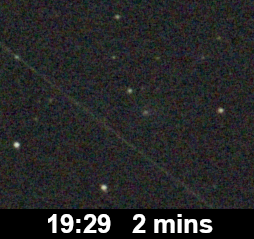
What an amazing little device... 2 inches in diameter!


















